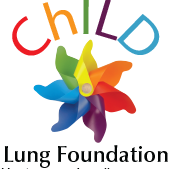Pulmonary aspiration is the entry of substances such as food, drink, or stomach contents into the larynx (voice box) and lower respiratory tract (from the trachea (windpipe) to the lungs). A person might inhale the substance or it might enter the lungs from the digestive tract during reflux or exhalation. This can occur in the neonate with meconium aspiration at delivery or can be associated with chronic aspiration in older infants and children.
Some infants have meconium aspiration from delivery. These patients are typically diagnosed clinically and do not require a biopsy. It can cause breathing difficulties due to swelling (inflammation) in the baby’s lungs after birth. The infant may need help with breathing or heartbeat immediately after birth, and therefore may have a low Apgar score. The health care team will listen to the infant’s chest with a stethoscope and may hear abnormal breath sounds, especially coarse, crackly sounds. A blood gas analysis will show low blood pH (acidic), decreased oxygen, and increased carbon dioxide. A chest x-ray may show patchy or streaky areas in the infant’s lungs. The infant may be placed in the special care nursery or newborn intensive care unit for close observation. Other treatments may include antibiotics for infection, oxygen therapy and breathing assistance, and radiant warmers. Most patients with meconium aspiration recover with no long term health effects.
In some children, small amounts of food or liquids enter the lungs and causes inflammation and potentially infection.
A swallow study can be performed by a radiologist and a speech-language pathologist to test for aspiration. During this study, the patient will swallow substances of varying thickness that contain barium. This allows the liquid to be seen on a screen as the person swallows. The doctors will look for problems with the muscles that coordinate swallowing, as well as, food actually penetrating the vocal cords. Depending on the type of problem seen, the doctors will work with the patient and their family to avoid further aspiration. In infants, milk or formula aspiration can be seen with lipid-laden macrophages (the cells that clean up the lungs become full of fats from the breakdown of the milk product), and granular eosinophilic debris (these cells are involved in inflammation and release their granules at sites of inflammation) in bronchoalveolar lavage (BAL) fluid or on biopsy. In older children, food particles can sometimes be seen.
Since aspiration can cause inflammation and infection. Antibiotics and breathing treatments are commonly used. The primary concern is to stop the recurrence of aspiration to avoid acute infection, and other chronic, permanent changes in the lung tissue, such as fibrosis.
More information
